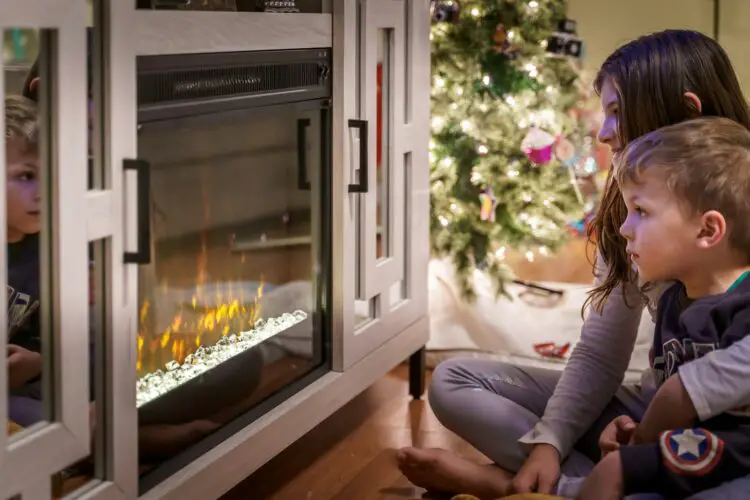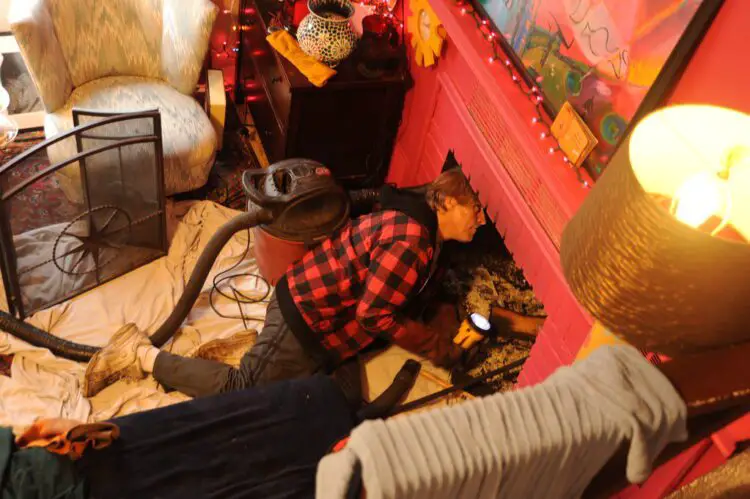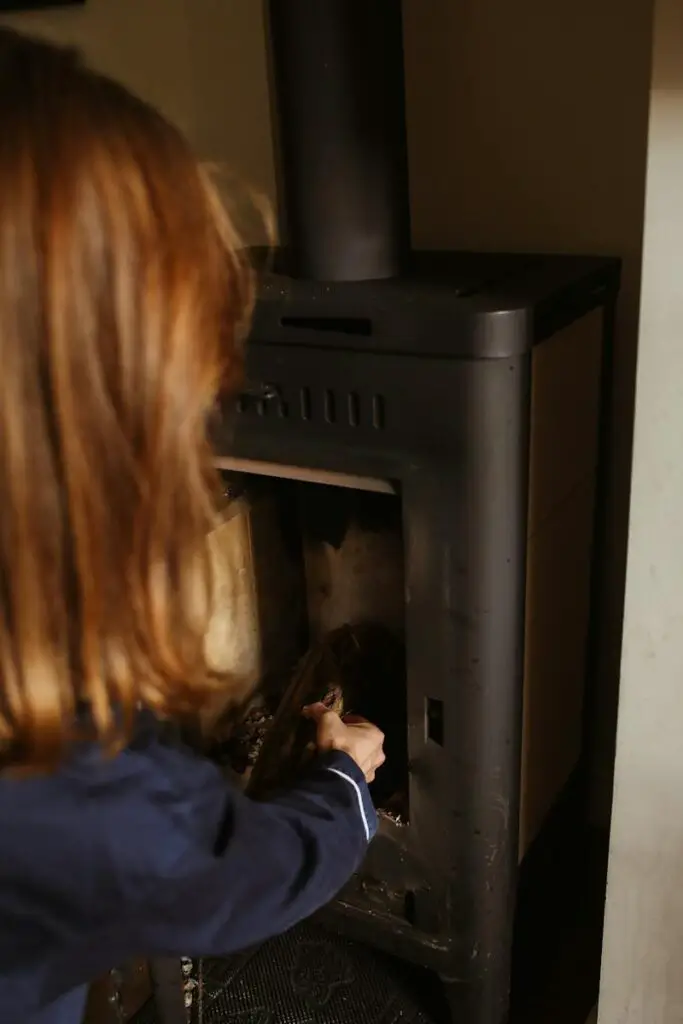The allure of a crackling fire in the hearth is a quintessential element of cozy home living. However, the responsibility that comes with owning a chimney and fireplace extends beyond mere aesthetics. Regular maintenance and cleaning are vital for the safety and efficiency of these features, ensuring they provide warmth and comfort without compromising on health or functionality. In this comprehensive guide, we will explore the critical aspects of chimney and fireplace care, including the significance of regular maintenance, the consequences of neglect, signs that your chimney and fireplace require attention, step-by-step cleaning procedures, the tools needed, do-it-yourself maintenance tips, the option of hiring professional chimney sweeps, recommended cleaning frequencies, safety precautions, and finally, the multitude of benefits associated with a well-maintained chimney and fireplace.
Importance of Maintaining and Cleaning Your Chimney and Fireplace
Your chimney and fireplace, often considered the heart of a home, serve more than just an aesthetic purpose. Beyond the ambiance they provide, these elements play a crucial role in the overall safety, functionality, and efficiency of your living space. Understanding the profound importance of regular maintenance and cleaning is paramount for ensuring not only the longevity of these features but also the well-being of your household.
The primary concern when it comes to maintaining your chimney and fireplace is the accumulation of creosote. This sticky, tar-like substance forms as a byproduct of burning wood or other fuels. Over time, creosote builds up within the chimney, creating a highly flammable layer. Without proper and timely cleaning, the risk of a chimney fire increases significantly. These fires can be devastating, leading to structural damage, compromised safety, and potentially hazardous conditions for everyone in the home.
Moreover, neglecting maintenance can result in reduced efficiency. A chimney clogged with creosote or debris impedes proper airflow, forcing your fireplace to work harder to produce the same amount of heat. This increased workload not only diminishes the effectiveness of your heating system but also raises energy costs. Regular cleaning ensures that your fireplace operates at optimal efficiency, providing maximum warmth without unnecessary strain on your heating system.
The importance of cleaning extends beyond mere efficiency; it directly impacts the indoor air quality of your home. A neglected chimney can become a breeding ground for mold, mildew, and other allergens. When these contaminants infiltrate the air circulation, they pose health risks to you and your family, particularly those with respiratory issues. Routine cleaning prevents the buildup of such harmful substances, maintaining a healthier indoor environment.
Furthermore, a well-maintained chimney and fireplace enhance the overall safety of your home. Regular inspections can identify potential issues, such as deteriorating mortar or damaged flue liners, before they escalate into major problems. Addressing these concerns promptly through maintenance ensures that your fireplace remains a source of comfort rather than a potential hazard.
In essence, the importance of maintaining and cleaning your chimney and fireplace goes beyond aesthetics. It is a fundamental aspect of responsible homeownership, safeguarding your property, your loved ones, and your investment. By incorporating regular maintenance into your routine, you not only ensure the longevity and efficiency of these cherished features but also provide a safer and healthier living environment for everyone in your home.

Common Problems Caused by Neglected Chimneys and Fireplaces
Neglecting the care of your chimney and fireplace can lead to a myriad of problems, each posing potential risks to the safety, functionality, and longevity of these cherished home features. Understanding these common issues is essential for homeowners to recognize the signs of neglect and take proactive measures to address them before they escalate into more significant concerns.
1. Creosote Buildup: One of the most prevalent problems resulting from neglected chimneys is the accumulation of creosote. This tar-like substance develops from the byproducts of burning wood or other fuels. Over time, creosote can form a thick, highly flammable layer within the chimney. Ignoring regular cleaning allows creosote to build up to dangerous levels, significantly increasing the risk of chimney fires. These fires can cause severe damage to the chimney structure and compromise the safety of your home.
2. Reduced Efficiency: Neglecting chimney maintenance can lead to reduced efficiency in your fireplace. Over time, creosote buildup, along with debris such as soot and ash, can obstruct the chimney flue. This obstruction impedes the proper flow of air, forcing your fireplace to work harder to produce the desired heat. The resulting decrease in efficiency not only diminishes the warmth generated but also increases energy costs, as the heating system expends more energy for less output.
3. Smoke Problems: A neglected chimney is prone to smoke-related issues. When the chimney is clogged with creosote or other obstructions, smoke may not be able to escape properly. This can lead to a backflow of smoke into your living space, causing discomfort, health concerns, and even potential respiratory issues. Addressing these problems promptly through regular cleaning ensures that your fireplace provides warmth without the unwanted side effects.
4. Structural Damage: Ignoring chimney maintenance can result in structural damage. Exposure to the elements and the intense heat generated by fires can cause mortar joints to deteriorate, leading to bricks or stones becoming loose. Additionally, damaged flue liners can compromise the integrity of the chimney, posing a risk of collapse. Regular inspections and maintenance can identify these issues early, preventing them from becoming major structural concerns.
5. Animal Infestations: Neglected chimneys often become attractive nesting spots for animals seeking shelter. Birds, squirrels, or even raccoons may build nests within the chimney, causing blockages and increasing the risk of chimney fires. Regular cleaning and inspections help identify and address potential infestations before they become problematic.
In conclusion, neglecting the maintenance of chimneys and fireplaces can result in a range of problems, from safety hazards like chimney fires to reduced efficiency and structural damage. Homeowners should prioritize regular inspections and cleaning to ensure that these issues are addressed promptly, preserving the safety, functionality, and longevity of their chimney and fireplace. Regular maintenance not only safeguards your investment but also contributes to a warm, efficient, and secure home environment.
Signs That Your Chimney and Fireplace Need Maintenance
Your chimney and fireplace, though often overlooked, communicate their condition through various signs that should not be ignored. Recognizing these indicators is essential for proactive homeownership, as addressing them promptly can prevent minor issues from evolving into major concerns. Regular maintenance is the key to preserving the safety, efficiency, and longevity of these integral components of your home.
1. Excessive Smoke During Use: If you notice an unusual amount of smoke entering your living space while using the fireplace, it’s a clear signal that maintenance is required. Excessive smoke can result from various issues, such as creosote buildup, a blocked flue, or even structural problems within the chimney. Addressing this promptly not only enhances your comfort but also ensures a safer and healthier living environment.
2. Lingering Burning Smell: A persistent burning smell, especially when your fireplace is not in use, can indicate the presence of creosote or other combustible materials within the chimney. This odor suggests that there might be an issue with the draft or ventilation. Ignoring this sign may lead to the heightened risk of chimney fires. Regular cleaning can eliminate these odors and enhance the overall air quality in your home.
3. Difficulty Starting a Fire: If you experience difficulty in starting a fire or notice that the flames seem weaker than usual, it could be a sign of restricted airflow. Accumulated creosote, soot, or debris within the chimney can hinder proper ventilation, affecting the combustion process. Regular maintenance, including cleaning the flue, ensures unobstructed airflow, allowing your fireplace to function efficiently.
4. Visible Creosote Buildup: Inspecting the interior of your chimney may reveal a shiny, tar-like substance known as creosote. This buildup is highly flammable and poses a significant risk of chimney fires. Regular cleaning is crucial to remove creosote and prevent potential hazards. Ignoring visible creosote is akin to leaving fuel within your chimney, waiting for an ignition source.
5. Damaged Mortar or Bricks: Exterior signs of damage, such as crumbling mortar or loose bricks, suggest structural issues within the chimney. Exposure to weather elements and the intense heat from fires can cause wear and tear. Addressing damaged mortar or bricks promptly through maintenance prevents further deterioration and ensures the stability of your chimney.
6. Water Stains on Interior Walls: Water stains on the interior walls surrounding your fireplace indicate potential water leaks. Damaged flashing, deteriorated chimney caps, or compromised chimney crowns can allow water infiltration. Regular inspections can identify and address these issues, preventing extensive water damage and preserving the integrity of your chimney.
In summary, being attentive to these signs is crucial for maintaining a safe and efficient chimney and fireplace. Regular inspections and timely maintenance not only address immediate concerns but also contribute to the long-term health and performance of these vital home components. Proactive homeownership ensures that your fireplace remains a source of comfort, warmth, and safety for years to come.
 Steps to Clean Your Chimney and Fireplace
Steps to Clean Your Chimney and Fireplace
A systematic approach to cleaning involves a thorough inspection, removal of creosote, addressing debris, and ensuring all components are in proper working order. Following these steps guarantees a comprehensive cleaning process.
Tools and Equipment Needed for Chimney and Fireplace Maintenance
Equipping yourself with the right tools is imperative for effective maintenance. Essential items include chimney brushes, safety gear, a vacuum cleaner, and protective covers to ensure a safe and efficient cleaning process.
DIY Chimney and Fireplace Maintenance Tips
For the hands-on homeowner, mastering some basic do-it-yourself maintenance tips can be empowering. From inspecting for damage to safely removing debris, these tips are practical and cost-effective for keeping your chimney and fireplace in top condition.
Hiring a Professional Chimney Sweep
While some homeowners prefer a DIY approach, others may opt for the expertise of professional chimney sweeps. These individuals possess the knowledge, experience, and specialized equipment necessary for a thorough cleaning, ensuring optimal performance and safety.
How Often Should You Clean Your Chimney and Fireplace?
Determining the ideal cleaning frequency depends on factors like usage and the type of fuel burned. Establishing a regular cleaning routine based on general guidelines ensures ongoing safety and efficiency.
Chimney and Fireplace Safety Precautions
Safety should always be the top priority when dealing with fireplaces. This section will delve into essential safety precautions, including proper ventilation during cleaning, wearing appropriate safety gear, and the safe disposal of debris.
The Benefits of Regular Chimney and Fireplace Maintenance
In conclusion, the effort invested in maintaining and cleaning your chimney and fireplace pays dividends in terms of safety, efficiency, and longevity. A well-maintained fireplace not only brings warmth to your home but also peace of mind, knowing that it is operating at its best.
Step-by-Step Cleaning Process
| Step | Task |
|---|---|
| 1 | Inspect the chimney and fireplace |
| 2 | Remove debris and ashes from the fireplace |
| 3 | Use a chimney brush to clean the flue |
| 4 | Check for and remove creosote buildup |
| 5 | Inspect and clean the chimney cap |
| 6 | Clean the fireplace doors and surround |
| 7 | Ensure proper ventilation during cleaning |
| 8 | Wear appropriate safety gear |
| 9 | Dispose of debris in a safe manner |
| 10 | Consider using a chimney cleaning log |
This comprehensive guide provides the knowledge and tools needed to maintain a safe and efficient chimney and fireplace. Regular care ensures not just a cozy atmosphere but also contributes to the longevity and safety of these cherished features in your home.


 Steps to Clean Your Chimney and Fireplace
Steps to Clean Your Chimney and Fireplace